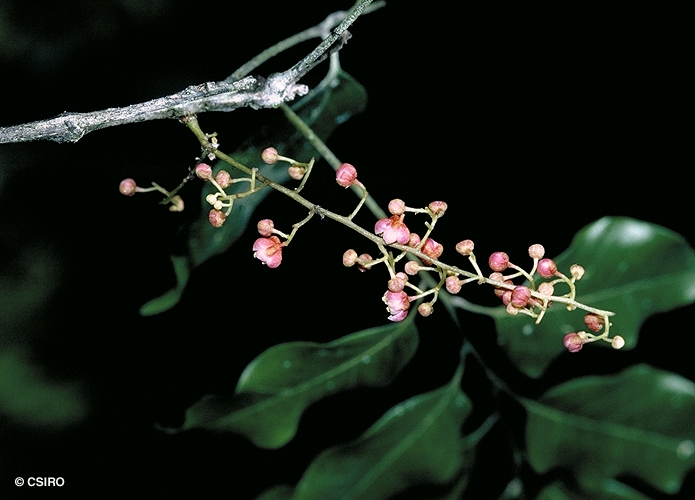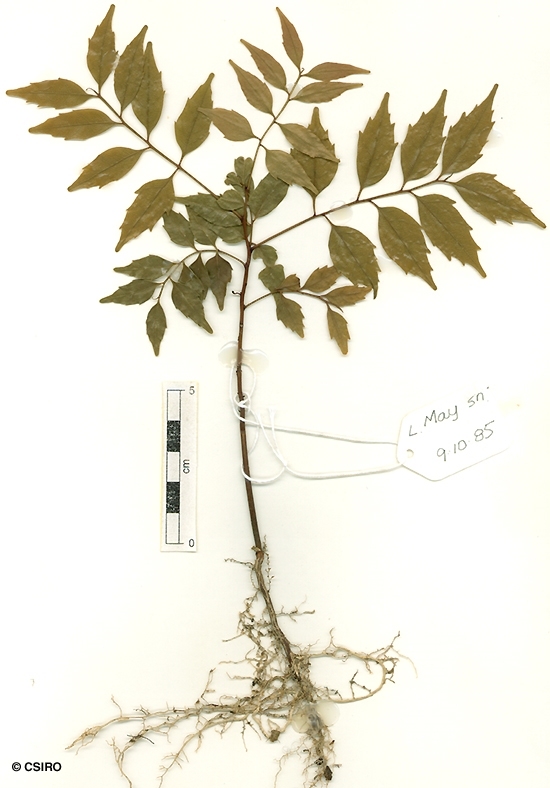Australian Tropical Rainforest Plants - Online edition
Lepiderema ixiocarpa S.T.Reynolds






Reynolds, S.T. (1981) Austrobaileya 1(3): 492. Type: Queensland, S.F.R. 251, Ismailia, 17 Jun 1954, Volck 761; holo: BRI; iso: QRS.
Sticky Lepiderema
Occasionally grows into a small tree but usually flowers and fruits as a shrub.
Terminal buds and young shoots +/- glabrous. Leaflet blades about 3.5-7 x 1-3 cm, margins sometimes toothed with up to four teeth on each side, leaflet stalks about 0.3-0.7 cm long. Lateral veins forming loops inside the blade margin. Leaflet stalks channelled on the upper surface with a ridge down the middle. Compound leaf petiole swollen at its junction with the twig.
First pair of true leaves compound with about 6-11 toothed or lobed leaflets. Compound leaf rhachis winged. At the tenth leaf stage: leaflet blades ovate, margins serrate. Young leaves and shoots marked with orbicular or +/- spherical, dark brown or reddish brown resin or oil glands. Seed germination time 17 days.
Endemic to NEQ. Altitudinal range from 800-1100 m. Grows as an understory plant in well developed, undisturbed upland and mountain rain forest.





